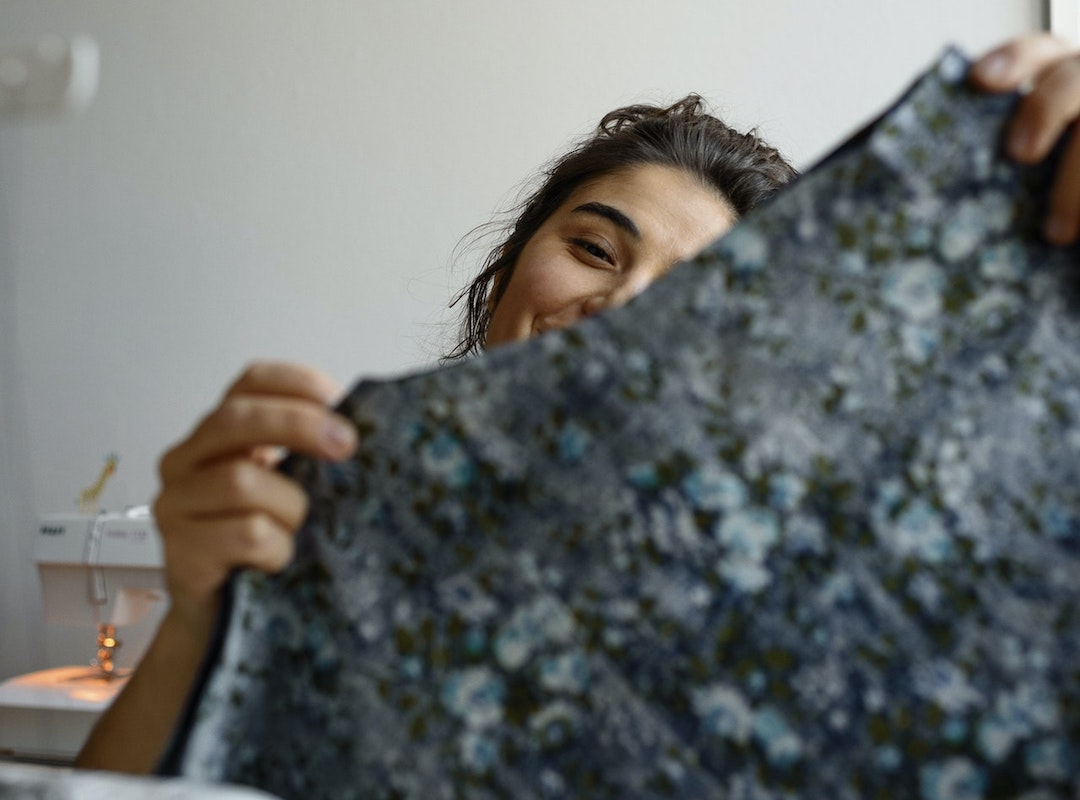
Like everyone else who is currently teaching, I needed to revise the syllabus for my course mid-semester. As I did that, I inserted this graphic at the top as a visual reminder for my students. If we focus on the “moon,” its light can help us see the meaning and good we can find in this moment. But, we need a sustainable schedule to do that.

I found this graphic here. Tailor it to suit you with the editable version.
Poet, activist, and transformational leader Sonya Renee Taylor, who founded The Body is Not An Apology, recently offered this inspiration for a social justice-informed global transformation:
We will not go back to normal. Normal never was. Our pre-corona existence was never normal other than we normalized greed, inequity, exhaustion, depletion, extraction, disconnection, confusion, rage, hoarding, hate and lack. We should not long to return, My friends. We are being given the opportunity to stitch a new garment. One that fits all of humanity and nature.
What if this new schedule we are designing for ourselves right now is the pattern for a new, more comfortable garment, one that meets everyone’s needs?
We're all in this together. Or we could be.
When I started writing this post, the Google Doodle spotlighted the need to “Stay Home. Save Lives.”

The letters animate helpful and important steps we can take in these “quarantimes” (h/t to my student Katie for introducing me to this new portmanteau): turning to indoor activities to devote our time to, like reading; exercising and moving our bodies to support our physical well-being and our emotional state of mind; finding new forms of entertainment, like music, for the duration that we cannot seek public entertainment; connecting with family and friends, our loved ones, through calls and video chats. Today, as I finish writing this post, this is again the doodle of the day. In my house, we’re starting week 6 of shelter in place and working remotely, and as the repeat of the doodle suggests, there is more than a hint of the movie Groundhog Day in our daily actions.
Every time I let a bit of the outside world into our home, whether through the TV, online, or over the radio (do not worry – we’re not literally letting the outside world in!), I hear a variation on the theme of “We’re all in this together!” In some crucial ways, this is true: we are living through a collective trauma, a worldwide health crisis. We are all in the same river. But we’re not all in boats, and those of us in boats are in our own unique ones.
To continue this thread of metaphors I’ve floated out: my observations above are the reason I recommend following a schedule in an extended crisis. This recommendation is NOT about trying to optimize your productivity. (My advice: ignore the messages telling you that you have all this free time now and should be embarking on a dozen self-improvement plans simultaneously). Instead, “pause” knowing that “now is absolutely the wrong time to take on unreasonably ambitious goals.”
Rather, it’s about caring for yourself in a way that nurtures resiliency.
When a crisis throws you out of your established daily life, I cannot overstate the importance of creating and following a new routine and structure. A manageable schedule becomes your life-vest while we’re in the coronavirus river. It guides you to taking the actions that take care of your needs. For me, this schedule includes five key components:
- Key touchpoints during the day: for me, this means holding to regular rising times, mealtimes, and bedtimes that honor my body’s rhythms and account for my responsibilities.
- Personal care routines: this includes showering regularly, getting dressed, etc.
- Physical activity: your body needs movement and exposure to sun/fresh air, especially if you’re now working for home and have lost all of the movement built into working in a public space.
- Work-life balance: when you work where you live, it’s all too easy to let work time bleed into personal time and to lose an on-off distinction – and so it’s all the more important to have time dedicated to work and time devoted to leisure activities.
- Connection with loved ones.
In a traumatic crisis like this, it’s natural to feel sadness, grief, anxiety, anger, boredom, fear – as well as joy, relief, contentment, peace, satisfaction, anticipation – the full range of human emotions. Sleep helps you manage your moods, which is why I list it first in my components of an emergency schedule.
But sleep can be challenging in a crisis. I have learned the hard way what nurtures it and what drives it away. For me, I have to be very mindful of my screen time in the evening and titrate my exposure to the news. Many sleep experts recommend that you separate your workspace from your sleep space as much as possible, going so far as to advocate reserving your bedroom for sleep. This can be challenging, depending on your home set-up. I share a 1400 sq. ft. house with my family, for example. The only options for my work desk are either a corner of our bedroom (a room I consider my refuge) or our unfinished basement, among the hanging laundry, yard tools, the cats’ litterbox, etc. (in other words, a space that’s super-challenging to work in). I have deliberately chosen not to work in our living room, in order to preserve it as a space of relaxation with my family. So, my desk is in my bedroom. While not ideal, it’s the best I can manage in this moment. I’m making it work with deliberate actions: at the end of the workday, I clean up the desktop and put everything away. I shut down my laptop. I cross off what I’d finished on my to-do list. I put all of the pens back in their jar. And I have a blanket draped over the back of the chair, which hides my view of my desk from the doorway and the bed.
My colleague Bethany Teachman reminds us that “The way people process threatening events matters a lot for how well they’ll manage this period of uncertainty.” A nurturing schedule can help hold cabin fever at bay. Now that you have likely completed the transition to sheltering in place and are contemplating how to sustain this for the duration, a self-care plan, including the emergency self-care plan, powerfully complements the sustainable routine I’m advocating.
In the middle of this transition to teaching and working remotely, a package arrived at my house: my copy of Feminist Responses to the Neoliberalization of the University: From Surviving to Thriving, the book that two friends and I had spent last summer and fall editing. My chapter in the book, in either spectacular good timing or unbelievable irony, is entitled “There is No Surviving without Thriving” and explores the importance and radical potential of self-care practices. In writing it, I confronted, in the deepest way to date, the impact of managing my husband’s health crisis while working full-time. Our book’s arrival felt like one more asynchronous moment of the spring, but my chapter’s message remains essential: we cannot survive crises without taking care of ourselves.
So while I’m not suggesting this is the time to learn three foreign languages, two musical instruments and how to bake bread from scratch, this pause does offer us the opportunity to think about who we are and who we want to be. There is a different kind of growth we can aspire to. This moment opens a space to “take a deep breath, ignore the deafening noise, and think deeply about what you want to put back into your life.” Emily Esfahani Smith’s reporting suggests that we take self-care beyond coping to also search for meaning, advocating what Viktor Frankl called tragic optimism: “But even more than helping them cope, adopting the spirit of tragic optimism enables people to actually grow through adversity.” As Teachman encourages us, “It’s better for your mental health to see this time as a collective challenge – one that is extremely difficult but which can be met if everyone works together.”
If we make the inspirational mantra, “We are all in this together!” a genuine truth in our response to coronavirus, our new reality has the potential to be the more equitable world we work for here at the Women’s Center.

